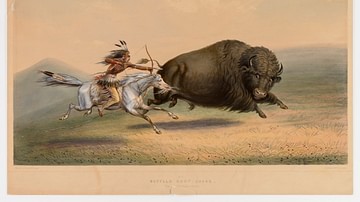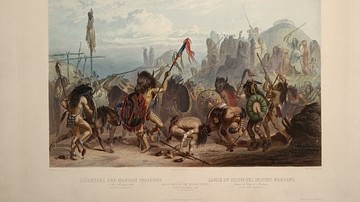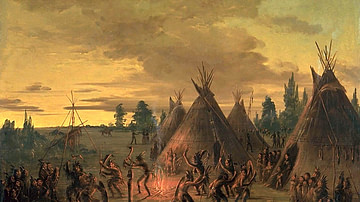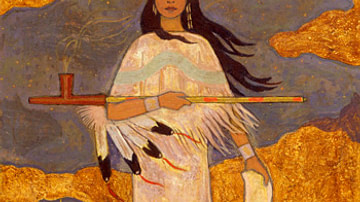Server Costs Fundraiser 2024
Video
And then took credit for “saving” them.
Subscribe and turn on notifications (????) so you don't miss any videos: http://goo.gl/0bsAjO
In 1894, a notorious poacher, Ed Howell, was caught in Yellowstone National Park slaughtering bison, which were on the brink of extinction. US Army soldiers patrolling the park brought him into custody, and the story led to the first US federal law protecting wildlife. The soldiers were thought of as heroes for stopping the killer. But it was the US Army who had been responsible for driving bison to near-extinction in the first place.
In the mid-1800s, a cultural belief known as “manifest destiny” dictated that white settlers were the rightful owners of the entire North American continent – even though Native Americans had inhabited the land for centuries. In order to clear that land for white settlers, the US Army engaged in violent scorched-earth tactics against the Indigenous peoples of the Great Plains. One big part of that campaign was to eliminate their crucial food source: the bison.
By the end of the 1800s, a combination of commercial and recreational hunting, plus the actions of the US Army, had depleted the bison population to under a thousand, down from tens of millions at the beginning of the century. Around the same time, the US government set aside some of the land once inhabited by the Plains Indians as a national park, and in 1872 Yellowstone was established.
A key mission of Yellowstone was to conserve the land and the animals that roamed there, including the bison. Today, the soldiers that once patrolled the park are celebrated for having “saved” the bison in Yellowstone, obscuring their own violent contribution to the animal’s near-extinction.
Darkroom is a history and photography series that anchors each episode around a single image. Analyzing what the photo shows (or doesn't show) provides context that helps unravel a wider story. Watch previous episodes here: https://www.youtube.com/playlist?list=PLJ8cMiYb3G5ce8J4P5j5qOEtYR94Z3DQs
Sources and further reading:
"The extermination of the American bison," 1887 Smithsonian survey by William T. Hornaday:
https://repository.si.edu/handle/10088/29938
"Poaching Pictures," by Alan Braddock:
https://www.jstor.org/stable/10.1086/649775?refreqid=excelsior%3A36683dbe1bb52d31972b1b4b4ca591cf&seq=1#metadata_info_tab_contents
"The frontier army and the destruction of the buffalo," by David T. Smits:
https://studylib.net/doc/8185838/the-frontier-army-and-the-destruction-of-the-buffalo
Vox.com is a news website that helps you cut through the noise and understand what's really driving the events in the headlines. Check out http://www.vox.com.
Watch our full video catalog: http://goo.gl/IZONyE
Follow Vox on Facebook: http://goo.gl/U2g06o
Or Twitter: http://goo.gl/XFrZ5H
Cite This Work
APA Style
Vox. (2024, January 18). Why the US Army tried to exterminate the bison. World History Encyclopedia. Retrieved from https://www.worldhistory.org/video/3110/why-the-us-army-tried-to-exterminate-the-bison/
Chicago Style
Vox. "Why the US Army tried to exterminate the bison." World History Encyclopedia. Last modified January 18, 2024. https://www.worldhistory.org/video/3110/why-the-us-army-tried-to-exterminate-the-bison/.
MLA Style
Vox. "Why the US Army tried to exterminate the bison." World History Encyclopedia. World History Encyclopedia, 18 Jan 2024. Web. 26 Jul 2024.





